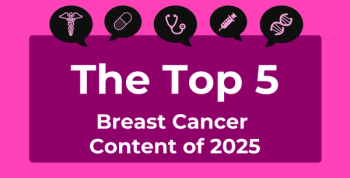
Medicare Beneficiaries With HIV More Likely to Have OUD
Key Takeaways
- Older adults with HIV on Medicare have higher opioid prescription rates and OUD diagnoses than those without HIV.
- Chronic pain in HIV patients, due to the virus or treatment, often leads to opioid prescriptions.
Opioids were more likely to be prescribed to Medicare beneficiaries living with HIV, which led to opioid use disorder (OUD).
Opioid use disorder (OUD) was a more common diagnosis in those 65 years and older with
Opioid medication can be given to patients with HIV for their
Medicare administrative claim data were used to compare the outcomes of older adults in the US with and without HIV. The sample included beneficiaries living in New Jersey and a randomly selected sample from all other states. Adults enrolled in Medicare between January 1, 2008, and December 31, 2021, were eligible for inclusion. The participant also needed to be at least 65 years and have at least 1 year of continuous enrollment in Medicare parts A, B, and D. Those who were not aged 65 years or were enrolled in hospice care were excluded.
Those who had at least 1 inpatient insurance claim for HIV-related treatment or unrelated treatment with an HIV diagnosis were considered to be living with HIV. Receiving 1 or more opioid prescriptions and any indicator of OUD acted as the primary outcomes of the study. Receiving high-risk opioid prescriptions acted as a secondary outcome.
There were 163,429 beneficiaries with HIV and 490,287 beneficiaries without HIV who were included in the study. The 2 groups were matched based on age, sex, race or ethnicity, the state they lived in, and their dual eligibility status, with 71 participants being excluded for having fewer than 3 matches. The participants were mostly men (72.7%) and non-Hispanic White (46.8%) and Black (36.4%). A total of 46.5% were aged 65 to 69 years.
There were 57,373 (35.1%) of those with HIV and 138,547 (28.3%) of those without HIV who were prescribed opioids at least once every year. High-risk opioids were also given to those with HIV more often than those without HIV (5.3% vs 3.5%). Indicators of OUD were more common in those with HIV compared with those without HIV in the same period (3.1% vs 1.2%).
Those with HIV had increased odds of receiving at least 1 prescription for opioids (OR, 1.38; 95% CI, 1.36-1.39), and indicators for OUD were also more likely in this population (OR, 2.61; 95% CI, 2.47-2.76) compared with those without HIV. The ORs for an OUD indicator decreased in those with HIV from 2008 to 2016, however.
There were some limitations to this study. The findings are not generalizable due to using data solely from the US, specifically from those on Medicare, and the US has the highest rate of prescribing opioids, which could make these results not generalizable to other populations. There also was potential bias in requiring continuous enrollment in Medicare parts A, B, and D for each year, as it could have left out some with HIV who had lapses in enrollment, and from excluding those with HIV due to not having 3 matched counterparts, which could have led to bias against older or minority patients. This study also is not generalizable to those in hospice care. Missing data and misclassification were possible, too, and it is unknown if the patient prescribed the opioids took the medication they were prescribed. The training received by the prescriber of the opioids also was not taken into account.
“Opioid prescribing remains common despite known opioid-related harms, and the risk of drug interactions and nonoverdose morbidity remains understudied in older people with HIV,” the authors concluded. “This study provides more information for practitioners to consider in their clinical decisions for older people with HIV and chronic pain.”
References
1. Shiau S, Drago F, Kindade CW, et al. Prescription opioid use and opioid use disorder among older adults with HIV in the USA from 2008 to 2021: a retrospective repeated cross-sectional study. Lancet Prim Care. 2025;1:100017. doi:10.1016/j.lanprc.2025.100017
2. Hayes R. Pain and HIV. Aidsmap. May 2025. Accessed October 14, 2025.
Newsletter
Stay ahead of policy, cost, and value—subscribe to AJMC for expert insights at the intersection of clinical care and health economics.









































